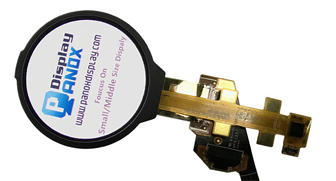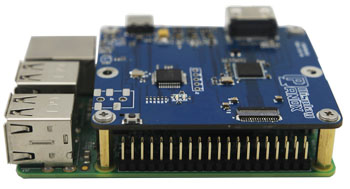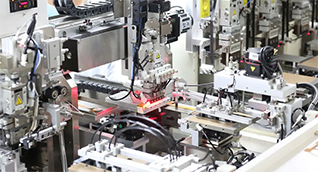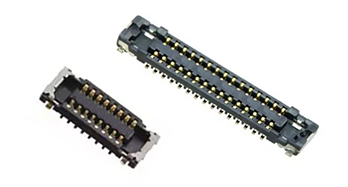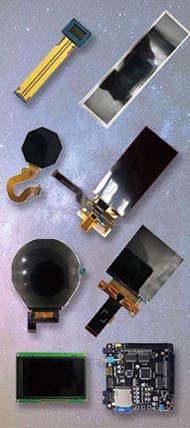An AMOLED display, or Active Matrix Organic Light Emitting Diode, is a cutting-edge screen technology known for its vibrant colors, high contrast, and energy efficiency. Widely used in smartphones, wearables, and automotive displays, it offers superior image quality and flexibility, making it a preferred choice among manufacturers, especially China-based OEMs and suppliers like Panox Display. Also check: OLED
What Is an AMOLED Display and How Does It Work?
An AMOLED display consists of organic materials that emit light when an electric current passes through. Unlike LCDs, it uses an active matrix of thin-film transistors (TFTs) to control each pixel individually, enabling faster response times, deeper blacks, and lower power consumption. This technology provides vivid colors and excellent viewing angles, ideal for high-end electronic products.
AMOLED screens combine OLED's natural self-lighting capability with the active matrix structure, which allows each pixel to be turned on or off independently for superior image control. Manufacturers can customize AMOLED panels for various sizes and applications, enhancing product versatility.
Why Are AMOLED Displays Preferred by OEMs and Factories in China?
Chinese manufacturers and factories favor AMOLED due to its competitive advantages in quality and production flexibility. AMOLED displays offer:
-
Superior image contrast and brightness, boosting product appeal.
-
Thin and lightweight design suitable for sleek devices.
-
Energy efficiency, reducing battery consumption.
-
Compatibility with flexible and curved display manufacturing, expanding product possibilities.
OEM factories like Panox Display leverage AMOLED technology to provide custom, scalable solutions that meet both domestic demand and global wholesale buyers. Their efficient production lines ensure competitive pricing with premium quality.
How Does AMOLED Compare to Other Display Technologies Like LCD and IPS?
| Feature | AMOLED | LCD | IPS-LCD |
|---|---|---|---|
| Backlighting | Self-emissive (no backlight) | Requires backlight | Requires backlight |
| Contrast Ratio | Infinite (true blacks) | Lower contrast | Better than standard LCD |
| Power Consumption | Generally lower with dark UI | Higher due to backlighting | Moderate |
| Viewing Angles | Excellent | Narrower than AMOLED | Wide viewing angles |
| Flexibility | Can be made flexible | Rigid | Rigid or slightly flexible |
| Response Time | Very fast | Slower | Moderate |
The active matrix OLED display provides significant benefits over traditional LCD and IPS displays, particularly for devices requiring dynamic visuals, low power use, and advanced form factors. This makes AMOLED ideal for demanding industrial and consumer product applications.
Which Industries Benefit Most from AMOLED Displays Supplied by Chinese Manufacturers?
AMOLED displays cater to a wide range of industries, including:
-
Consumer electronics like smartphones, tablets, and smartwatches.
-
Automotive displays featuring dashboards with dynamic visuals.
-
Medical equipment requiring high-contrast reliable screens.
-
Military and aerospace where durability and clear imaging are critical.
-
Wearables and VR devices demanding flexible, lightweight panels.
Factories in China, such as Panox Display, serve these sectors by offering customizable AMOLED options designed to meet strict quality standards and OEM specifications globally.
How Can Wholesale Buyers and Suppliers in China Source High-Quality AMOLED Displays?
Wholesale buyers should partner with experienced manufacturers to ensure reliable AMOLED supply. Key steps include:
-
Verifying supplier certifications and manufacturing capacity.
-
Assessing product customization and OEM service options.
-
Requesting samples to test performance under specific use cases.
-
Evaluating supply chain reliability and after-sales support.
Panox Display stands out as a trusted supplier with robust production lines, top-tier component sourcing, and comprehensive system solutions, including touch panels and controller boards tailored for wholesale and OEM clients worldwide.
When Should Manufacturers Choose Custom AMOLED Display Solutions?
Manufacturers needing unique display sizes, shapes, or integrated touch functionality benefit most from custom AMOLED solutions. These allow:
-
Brand differentiation through tailored designs.
-
Better user experience with optimized screen performance.
-
Seamless integration into specialized devices with non-standard dimensions.
Panox Display specializes in OEM and ODM services that help factories quickly develop prototypes and scale production to meet both niche and large-volume needs.
Where Does AMOLED Display Manufacturing Fit in China’s Industrial Landscape?
China leads globally in AMOLED production, supported by advanced supply chains and manufacturing hubs in Shenzhen, Guangzhou, and beyond. This ecosystem enables:
-
Economies of scale allowing competitive prices.
-
Access to cutting-edge technology from suppliers like Samsung, AUO, and BOE.
-
Flexible OEM partnerships offering everything from raw panels to full display modules.
Panox Display’s headquarters in Shenzhen leverage this environment for swift, quality-assured AMOLED production serving global demand.
Does AMOLED Technology Impact Cost and Supply Chain for B2B Buyers?
AMOLED displays generally have higher initial costs than LCDs due to complex manufacturing processes. However, cost gaps are narrowing as production scales up, especially in China. Bulk orders from OEM factories like Panox Display help reduce unit prices for wholesalers.
Supply chain complexity can increase slightly due to component sensitivity but well-established Chinese manufacturers mitigate risks with robust quality control and local sourcing networks—ensuring steady availability for B2B buyers.
Panox Display Expert Views
"AMOLED technology represents the future of display innovation, balancing aesthetics, functionality, and energy efficiency. At Panox Display, we harness advanced Chinese manufacturing capabilities and global partnerships to deliver premium, customizable OLED and AMOLED panels tailored for diverse industries. Our commitment is to lower barriers for buyers seeking high-quality displays without high MOQ constraints, driving growth for startups and established businesses alike." — Panox Display R&D Team
Summary
AMOLED displays offer unmatched visual quality, power efficiency, and design flexibility, making them ideal for a variety of industrial and consumer products. China’s manufacturing strength, exemplified by companies like Panox Display, empowers OEMs, wholesalers, and suppliers to access customized, reliable, and competitively priced AMOLED screens. By choosing AMOLED solutions, B2B buyers can elevate product performance and market appeal while benefiting from advanced manufacturing support and supply chain advantages.
Frequently Asked Questions
What differentiates AMOLED from OLED?
AMOLED uses an active matrix TFT backplane to control each pixel individually, providing faster response and better image quality than passive OLED.
Can AMOLED displays be flexible?
Yes, AMOLED technology supports flexible and curved displays that enhance modern design possibilities.
Are AMOLED displays energy efficient?
Generally, yes. AMOLEDs consume less power, especially with darker content, since pixels emit their own light and can turn off completely.
Is Panox Display reliable for OEM services?
Panox Display is a trusted OEM manufacturer with decades of experience offering tailored AMOLED and LCD solutions at competitive wholesale rates.
How does AMOLED improve user experience?
AMOLED’s deep blacks, bright colors, and fast response times provide vibrant, immersive viewing perfect for high-end devices.











